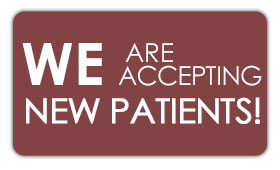Sciatica is a set of symptoms, not a diagnosis, which is often characterized by pain, pins and needles, a burning sensation, numbness or tingling, that radiates from the low back down the back of the thigh to the back of the leg and even sometimes to the toes. Typically, symptoms only manifest on one side of the body and may even be present without back pain. The pain will often occur in a specific area of the leg, called a dermatome, and may be associated with neurological dysfunction, such as weakness and loss of sensation. Patients explain the pain as radiating or a “shooting type,” traveling along the course of the sciatic nerve. This may even cause referred pain, that radiates around the hip or buttock, to feel similar to hip pain. Severe cases of sciatica can make walking, sleeping and other daily activities difficult; if not impossible. The symptoms of sciatica are aggravated by sitting, sneezing, coughing or bending at the waist and can often be relieved by lying down, positional movements and rest.
Sciatica is specifically caused by compression or irritation to any one of five spinal nerve roots, which comprise each sciatic nerve. It is also caused by direct irritation of the left or right sciatic nerves by a muscle or soft tissue. There are 5 main causes of sciatica: Spinal disc herniation, spinal stenosis, piriformis syndrome, pregnancy and others.
1) 90 % of sciatica is caused by a spinal disc bulge/herniation pressing on one of the lumbar or sacral nerve roots. This pressure restricts blood supply to the nerves and the feeling of “pins and needles” soon ensues. 2) Spinal stenosis occurs when the spinal canal, the space where the spinal cord runs through, narrows and compresses the spinal cord or nerves. This narrowing can be caused by genetic anomalies, bone spurs on the vertebrae, spondylolisthesis, inflammation, or herniated disc, which decreases available space for the spinal cord, thus pinching and irritating nerves. 3) Piriformis syndrome is a rare condition that effects up to 8% of low back or buttock pain. In approximately 15% of cases, the sciatic nerve pierces through, or under the piriformis muscle, rather than beneath it. When the piriformis muscle becomes shortened ,due to trauma or overuse, this can cause direct compression of the sciatic nerve. It has also been referred to as “wallet sciatica,” since a wallet, carried in a rear hip pocket, compresses the buttock muscles and sciatic nerve when sat upon. 4) Sciatica may also occur during pregnancy, when the weight of the fetus begins to press on the sciatic nerve while sitting, or when experiencing a muscle spasm. While most cases do not directly harm the fetus or the mother, indirect harm may come from the numbing effect on the legs. 5) Sciatica can also be caused by tumors impinging on the spinal cord or the nerve roots. Trauma to the spine, such as from a car accident or sports injury, may also lead to sciatica.
Risk factors for sciatica include age-related changes to the spine, such as herniated disks and bone spurs, and are the most common causes of sciatica. Obesity may accelerate sciatica by increasing the stress on your spine. A job that requires you to twist your back, carry heavy loads or drive a motor vehicle for long periods, may play a role in sciatica. People who sit for prolonged periods, or have a sedentary lifestyle, are more likely to develop sciatica than active people. Since diabetes affects the way your body uses blood sugar, this can also increase your risk of nerve damage.
Sciatica is typically diagnosed through physical examination and the history of the symptoms. Imaging, such as X-ray or MRI, may be utilized. An X-ray of your spine may reveal an overgrowth of bone (bone spur) that may be pressing on a nerve. MRI produces detailed images of bone and soft tissues, such as herniated disks or gross pathology.
Treatment for sciatica or sciatic symptoms often differs, depending on the underlying cause and history. Anti-inflammatories and steroid injections decrease inflammation and may decrease pain. Chiropractic adjustments and stretching, specifically to joints that are not moving, can reduce compensation/injury in other areas of the body. Therapies such as heat,ice and muscle stimulation, will reduce inflammation, modulate pain and increase function.

 I grew up in Dayton, Ohio and completed my chiropractic education at Logan College of Chiropractic in St. Louis Missouri. After graduating chiropractic school I moved to Nashville. I have practiced in Nashville for 10 years and Nolensville for over 7 years. I enjoy spending time with my family, dogs, golfing, kayaking, watching college sports and being an active member of the Nolensville community and serving its health needs.
I grew up in Dayton, Ohio and completed my chiropractic education at Logan College of Chiropractic in St. Louis Missouri. After graduating chiropractic school I moved to Nashville. I have practiced in Nashville for 10 years and Nolensville for over 7 years. I enjoy spending time with my family, dogs, golfing, kayaking, watching college sports and being an active member of the Nolensville community and serving its health needs.